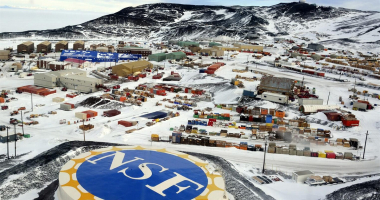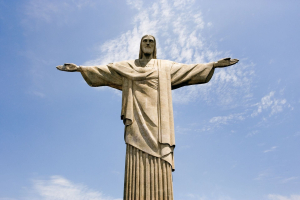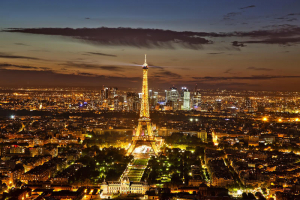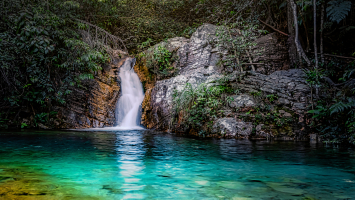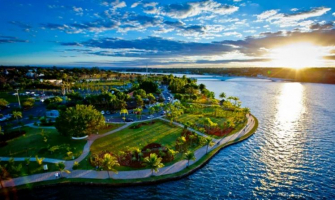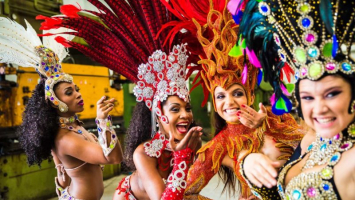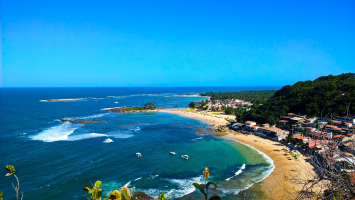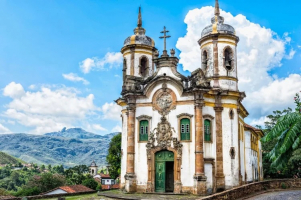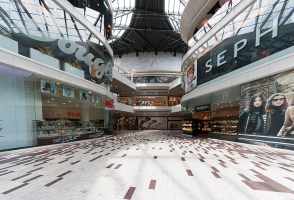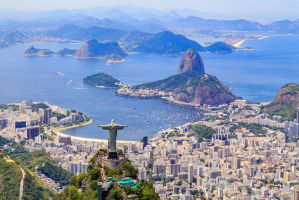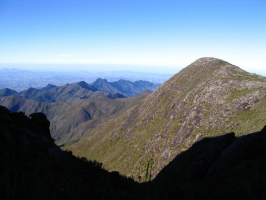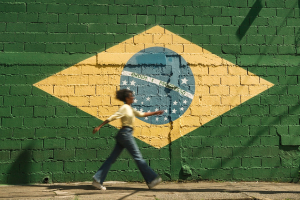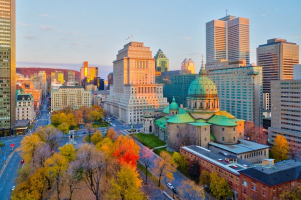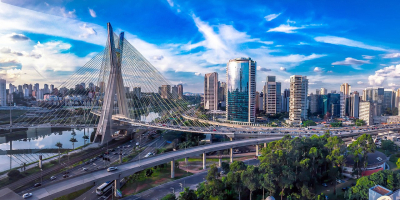Top 10 Major Cities in Brazil
Brazil is one of the most populous nations in the world, with 15 cities having populations of over a million people. As of 2016, there were 5,570 ... read more...municipalities in the nation, including 1,409 cities with a population of at least 10,000 people and more than 200 cities with a minimum of 100,000 inhabitants. There are typically more than 200 municipalities in each state. There are 26 states in all, plus the Federal District, which is where Brasilia, the state capital, is located. The largest city in almost every state is the capital. Do you want to know which are the major cities in Brazil? Here is a list of the 10 Major Cities in Brazil that Toplist wants to introduce to readers.
-
Global city Sao Paulo has outstanding statistics. The fifth-biggest city in the world, it is not only the most populated metropolis in Brazil but also the largest city in the Americas, the Western Hemisphere, and the Southern Hemisphere. One of the top ten largest metropolitan areas in the world in Sao Paulo. Thus, Sao Paulo is considered the Major City in Brazil.
Sao Paulo is situated midway between the two nearby cities of Curitiba and Rio de Janeiro, in the southeast of both Brazil and the state of Sao Paulo. The city is situated on a plateau beyond the Serra do Mar, which is itself a portion of the vast area known as the Brazilian plateau. The elevation of the plateau averages up to 799 meters (2,621 ft) above sea level while being barely 70 kilometers (43 miles) from the Atlantic Ocean. Two downhill roadways, Anchieta and Rodovia dos Imigrantes, which connect the port city of Santos to the beach resort of Guarujá, span the distance. With the exception of the northern part of Sao Paulo, where the Serra da Cantareira mountain range reaches its height and the remnants of the Atlantic rainforest may be found, the urbanized area of Sao Paulo is characterized by rolling topography. The area is seismically stable and has not seen a lot of activity as yet.
Being responsible for 10.7% of the GDP of Brazil, the city is renowned for its economic might. Additionally, it exerts a significant cultural effect on the nation through hosting significant museums, exhibitions, and sporting events.
The Sao Paulo Museum of Art, the Museum of the Portuguese Language, and Ibirapuera Park are its most well-known tourist destinations. Paulista Avenue is another popular destination in the city, particularly on the weekends. The hectic pace of the city may not be for everyone, but if you're interested in learning more about what makes Brazil the third-largest economy in the world, a trip there is a great opportunity to do so. Since Sao Paulo's main airport offers flights to over 90 places across the world, it's also a terrific site to begin or conclude your trip to Brazil.Video: I Love Travel Video: Exploropia -
Rio de Janeiro is not just the most well-known town in Brazil; it is also one of the biggest. The Rio de Janeiro Metropolitan Region has 22 municipalities and more than 13 million residents total, with a population of over 6 million. Rio de Janeiro, which was founded in 1565, was the nation's capital from 1763 until 1960 when Brasilia took its place.
Rio de Janeiro is situated on a ridge near the Tropic of Cancer on the east-west oriented Atlantic coast of Brazil. The settlement, which is mostly facing south, is located on a strait in Guanabara Bay, and a land point known as the "Pao de Açucar" of the city serves as its entry marker. On the lowlands of Guanabara Bay's western coast is where Rio's city core is located. The greater area of the metropolis, referred to as the Northern section, stretches northward across plains made up of sediments from the ocean and the continent as well as over hills and rocky mountains. The center and northern portions of the city are divided from the southern portion by the coastal mountains, which jut out into the open sea. These hills and mountains are branches of the ancient gneiss-granite Serra do Mar, a long, southwesterly mountain range that comprises the southern slopes of the Brazilian plateau. In the latter half of the 20th century, new roads and tunnels were added to the huge area of the west that was divided by steep terrain.
Rio de Janeiro is the most appealing city in Brazil. All kinds of tourists are captivated by the charming streets. Visitors to Rio de Janeiro are greeted by stunning 360-degree vistas of the Atlantic Ocean, lovely beaches, and almost infinite options for sunbathing, dancing, and exploring. It is also a popular tourist destination in South America thanks to its natural beauty, Carnival, live music scene, and well-known sites. For example, Copacabana Beach, the Christ the Redeemer statue, Sugarloaf Mountain, and Maracana Stadium are among the well-known Rio sights.
Every year, during the first two weeks of February, during the Carnival season, there is a spiritual boom. Every Saturday after Carnival, tourists can see Samba schools battle for the crown reward during the winner's parade. Football is a popular sport in Rio. One of Brazil's most significant activities and loves is football. It will be difficult not to fall in love with Brazilian culture after attending a football game.
With its extensive white sand beaches, the greenery of Tijuca National Park and Botanical Garden, the top of Corcovado mountain (with the iconic statue of Christ), and the mountains, Rio de Janeiro is known as the city between the mountains and the sea. A harmonious urban environment is created by the hills around Guanabara Bay, which also contribute to the city's outdoor cultural landscape. In 2012, UNESCO designated parts of Rio de Janeiro as a world heritage site, including the Statue of Christ, Botanical Garden, buildings along the Copacabana coast, structures in the hills surrounding Guanabara, and the city's cultural park. Rio de Janeiro is known for its cultural values and architectural masterpieces that blend with the mountains and sea.
Video: Drone Snap Video: Exploropia -
The state of Bahia's capital is Salvador, a city on Brazil's northeastern coast. One of the oldest cities in both this nation and the New World, it served as Brazil's first colonial capital. Long known as Bahia, the city is often referred to as Salvador da Bahia on maps and in publications to distinguish it from other Brazilian cities of the same name that existed before the middle of the 20th century.
Salvador is located on a peninsula with a roughly triangular form that divides the Atlantic Ocean's open sea from the Gulf of Todos os Santos. The port is named for the day that Europeans first learned that it was a significant port in the Bahia area.
Salvador is the most populous city in Northeastern Brazil and ranks third in terms of population in Brazil, behind Sao Paulo and Rio de Janeiro. The Salvador metropolitan region has the Northeast's highest level of prosperity. The Salvadoran metropolitan area has a population of more than 80% people of Black African heritage, making it the heart of "Negro culture" in Brazil due to the impact of African culture there. The 17th through 19th centuries are well represented in Salvador's historic core, or Pelourinho, which was named a UNESCO World Heritage Site in 1985.
Salvador de Bahia, the first capital of Brazil, is one of the continent's oldest colonial capitals. It is renowned for its gastronomy, dancing, music, and colonial architecture, particularly in the historic district of Pelourinho. Important religious celebrations, particularly those associated with Afro-Brazilian traditions, such as the Feast of Bomfim and Feast of Yemanjá, take place in the city. With an overall length of 80 km, Salvador's shoreline is also among the longest in Brazil. Farol da Barra and Barra Beach, the Lacerda Elevator, Mercado Modelo, and the Pelourinho historical district are some of its most well-known tourist attractions. Salvador is particularly well-known for its Carnival, which features a lot of Axé music and unique sound trucks.
Video: One Man Wolf Pack Video: Sly's Life -
Brazil's federal capital and the location of the Federal District government in Brasilia. The city was founded on April 21, 1960, to serve as the country's new capital. It is situated in the Central-Western area of Brazil, near the top of the Brazilian plateau. In particular, Rio de Janeiro served as the nation's capital from 1763 to 1960. National power during the period tended to be centered in the southeast of Brazil, close to Rio de Janeiro. In terms of the region, Brasilia's central location is more advantageous for a central federal capital. The first republican constitution of 1891 contains a provision that recommends moving the capital from Rio de Janeiro to a site close to the country's center. Jose Bonifácio, an adviser to Emperor Pedro I, came up with the scheme in 1827. He proposed a concept for a new city called Brasilia to the Brazilian General Assembly with the intention of relocating the nation's capital away from the densely populated southeastern corridor. It was designed by landscape architect Roberto Burle Marx, architects Lucio Costa and Oscar Niemeyer, and engineer Joaquim Cardozo.
The population of Brasilia and its metropolitan area was 2,556,149 in 2011, making it the fourth most populated city in the nation. Brazil's capital, Brasilia, has the highest GDP per capita among the continent's major cities in 2013.
In 1956, Lucio Costa and Oscar Niemeyer designed and built Brasilia to relocate the nation's capital from Rio de Janeiro to a site nearer the geographic center. The city plan is broken up into numbered blocks and sections reserved for particular uses, such as hotel complexes, banks, or embassies. Additionally, Brazil's capital city was chosen as a UNESCO World Heritage site because of its cutting-edge construction and distinctive creative urban design in 2017.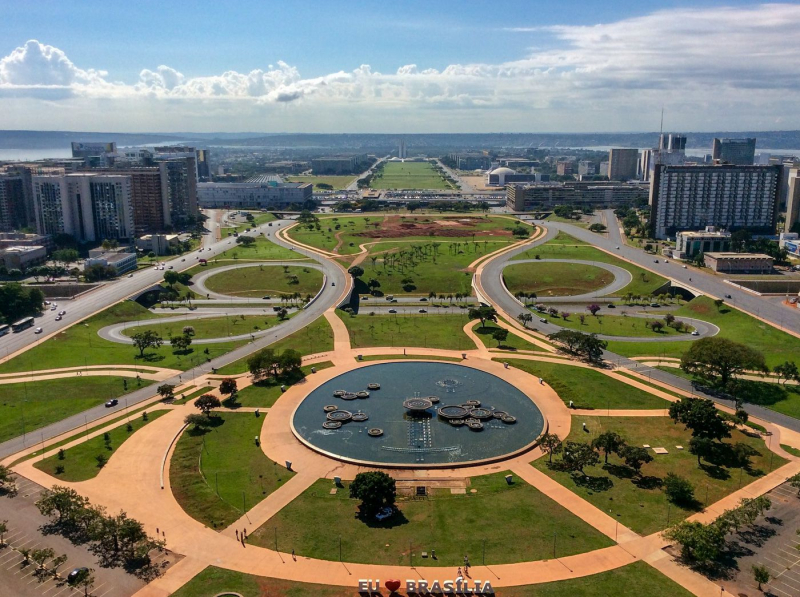
Aerial view of the city of Brasilia - Photo: istockphoto.com Video: expediasea -
Northeastern Brazil's state of Ceara has Fortaleza as its capital. It is a part of Fortaleza's Metropolitan Center and Fortaleza Subregion. It is the 12th richest city in Brazil in terms of GDP and the fifth-largest city overall. In the North and Northeast areas, it also boasts the third-richest metropolitan area. It is a significant industrial and commercial hub for Brazil and ranks as the seventh largest metropolitan in the country in terms of buying power. The city is now the second most popular travel destination in Brazil and the fourth most visited city in Brazil, according to the Ministry of Tourism. The busiest road in the nation, BR 116, starts at Fortaleza. The municipality is the seat of the Brazilian state closest to Europe and a member of the Mercosur Common Market of Cities.
One of Brazil's greatest cities and top party spots is concentrated in Fortaleza. Due to its large number of clubs and immaculate beaches, the expansive city is popular with both domestic and foreign travelers. There are 16 miles of beaches in the city. Acquario Ceará, which will be one of Brazil's biggest seas, is now being built. Fortaleza has become one of the top Brazilian tourist destinations for Europeans because of attractions like the Beach Park amusement park, which is located in Great Fortaleza, Avenida Beira Mar with its bars, restaurants, and music clubs, the Futuro and Iracema beaches, and Pirata Bar.
Fortaleza's cuisine is fairly similar to that of the typical Northeastern region. Traditional dishes include tapioca, which is a pancake made from cassava starch, and "Baião de Dois", which is typically served with barbecued sheep or other meat. Another common component of Fortaleza cuisine is seafood, which is used in dishes such as steak moqueca and mackerel, and snapper fish. The crab is a state coast fruit that has a marine identity. Additionally popular delicacy, shrimp and lobster may be found in meals like shrimp rice and shrimp dumplings.
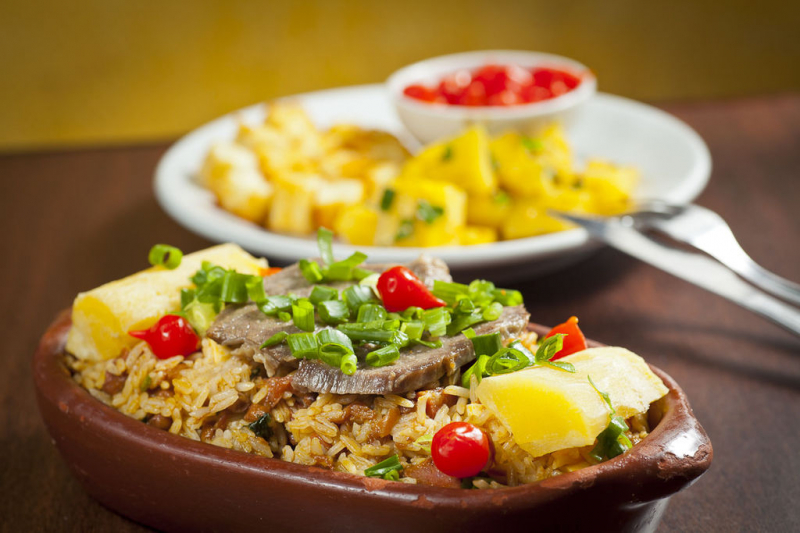
The baião de dois a typical dish of Fortaleza - Photo: wikipedia.com Video: One Man Wolf Pack -
The state of Minas Gerais's capital is Belo Horizonte. With a population of over 2.5 million, it is one of Brazil's major cities. Over 6 million people really live in its metropolitan region. The first planned modern city in Brazil is Belo Horizonte or BH as locals refer to it.
The state of Minas Gerais is headquartered in the Brazilian city of Belo Horizonte. The city was established in 1895, and in 1897 it took the position of Ouro Prêto as the state capital. It was the country's first planned city and grew to be a significant commercial hub. This is the hub of the mining region, which is full of iron ore, gold, manganese, nickel, and precious stones. Here, materials including iron, steel, refined metals, textiles, and transportation equipment are produced.
The city of Belo Horizonte is attractively laid out, with broad boulevards flanked by trees on either side and emanating from a sizable park. The world's largest football stadium is in this city. The Federal University of Minas Gerais, established in 1927, the Pontifical Catholic University of Minas Gerais, established in 1958, and the School of Fine Arts are all located in the city in 1954. Belo Horizonte has played a significant role in Brazilian architectural history. The Little Church of San Francisco, created by Oscar Niemeyer Soares Filho and located in the Pampulha neighborhood of the city, is decorated with works of art by Brazilian artist Cádido Portinari. Oscar Niemeyer and Burle Marx used the Pampulha area as a blank canvas to display their works. Belo Horizonte also has several parks and is home to hundreds of native birds and creatures due to the city's mountainous surroundings.
Belo Horizonte, Brazil Walking Tour - Video: Jamerican Youth Travels Video: One Man Wolf Pack -
The main and capital city of the northern state of Pará is Belem, which is a municépio. This is the busy harbor and airport at the mouth of the Amazon River. Belem is situated near the Pará River, which is a component of the larger Amazon River system, about 100 kilometers off the coast of the Atlantic Ocean. It is the 11th largest city in Brazil by estimated population (1,439,561) and has the 16th largest economy. After Manaus in the state of Amazonas, it is the second-largest city in the North Norte area.
Belem was the first European settlement in the Amazon and was founded by the Kingdom of Portugal in 1616; however, it was not introduced into Brazil until 1775. Two airports serving Belem include Brig Protásio de Oliveira Airport and Val de Cés International Airport which connects it with other important South American cities as well as the rest of Brazil.
Belem is very significant to Brazilian culture. It hosts customary celebrations like Cristo de Nazaré, the biggest religious gathering in the nation. Ver-o-Peso Market, Estaço das Docas, and Theatro da Paz are some of Belem's well-known tourist attractions.Belem do Pará, Brazil - Video: Overvalued Ver-o-Peso Market, Estaço das Docas - Video: Jack Mochila -
The capital of the state of Paraná is in Curitiba, located in the largest municipality in southern Brazil. With 1,760,500 inhabitants as of 2010, the city is the most populous in the southern region of Brazil and eighth overall. The Curitiba metropolitan area, which consists of 26 municipalities and has a total population of about 3.2 million, is the seventh largest metropolitan area in Brazil in terms of population.
In Brazil and throughout Latin America, Curitiba is an important cultural, political and economic center. The settlement is located on a plateau of 932 meters (3058 feet) above sea level. Afonso Pena International Airport and Bacacheri Airport serve the city, 105 km west of Paranagua's harbor. The Federal University of Paraná, founded in 1912, is located in the city.
After the 1950s, the city had its highest growth as a result of creative urban design, which increased the population from a few hundred thousand to well over a million. Today, Curitiba has the fourth-largest economy in Brazil because of its industry and service-based economy. A considerable migration of Brazilians from other cities in the nation coincided with economic expansion (just around half of Curitiba's population was born there).
It is also one of the safest cities in Brazil and one of the few places in the country with a very high Human Development Index. At the moment, Curitiba has one of the highest human development indices in Brazil (0.856), and in 2010, the city won the Global Sustainable Cities Award, which was created to acknowledge the achievement of the city. Urban development that is sustainable is primarily a function of cities and municipalities. Curitiba is deemed to be the "best Brazilian major city" to live in by the American magazine Reader's Digest.
With 52 square meters of green space per inhabitant, the city also boasts one of the highest percentages of green space in Brazil. The city, which has more than 30 parks and woods, offers a hop-on-hop-off tourist bus service that you may use to see the majority of its tourist attractions.
Therefore, Curitiba is one of Brazil's most charming modern cities, despite not being one of the country's most well-known cities. A unique train journey through the Atlantic Rainforest is provided by the city. You won't find a similar experience anyplace else in South America. Curitiba has a wide selection of eateries and pubs that provide delectable regional fare. There are several parks in Curitiba that have wonderful gardens and magnificent sculptures.
Video: Polychronis Drone What to do in Curitiba, Brazil's greenest city - Video: Cuppa to Copa Travels -
Within the Amazon rain forest is Manaus. The biggest rainforest in the world is home to a sizable metropolis with nearly 2 million residents. Amazingly, the Amazon Rainforest takes over 60% of Brazil's total geographical area. Manaus is not the only city in the jungle, but it is an important one since it serves as a key conduit for passage through the Amazon. The rise of the city's economy was facilitated by the export success of latex (obtained from nearby rubber trees).
With average summertime temperatures of 26.7°C and maximum summertime temperatures of 38.3°C, this city is among the warmest capital cities in Brazil.
Manaus is currently one of the top cities in Brazil thanks to its stunning architecture, ancient squares, and several Amazon research facilities. The Amazon River's shore is lined with stunning beaches and river views. Manaus is the starting point for cruises in the Brazilian Amazon, which purposefully choose a path with lower mosquito populations due to water nutrient levels. There are several hotels close to Manaus that provide genuine Amazon experiences. Brazilian and international planes are welcomed at the Manaus International Airport. The Amazon Theatre, Mercado Adolpho Lisboa, the Ponta Negra Cultural, Sport and Leisure Park, and many other places make Manaus a popular tourist destination. Therefore, Manaus deserves as one of the 10 Major Cities in Brazil.
Manaus, Brazil - Video: Indigo Traveller Tour of Manaus, Brazil - Video: 7 Continents 1 Passport -
The state capital of Pernambuco, Recife, is a port city in northeastern Brazil. The city is situated close to South America's easternmost point on the Atlantic Ocean coast. One of Brazil's largest cities, it is split into many districts by rivers. The three main counties are Santo Antônio, the administrative center on the island of Antônio Vaz, Boa Vista, and So José, the financial and economic hub on a peninsula. The city has a total area of 218 km2, a metropolitan area of 2,768 km2, a population of 1,515 million, and a population of 6.88 million for the entire metropolitan region.
Recife is occasionally referred to be the Venezia of the Americas because of all the rivers that exist there. The city's primary industries are cement manufacture, leather goods, textiles, metals, fruit and vegetable processing, cement import and export, and refined sugar. Among the educational institutions in the city include the Federal University of Pernambuco (1946), the Catholic University of Pernambuco (1951), and the Federal Rural University of Pernambuco (founded in 1954). The primary airport serving this city is Guararapes International Airport. Recife was founded by Europeans in 1535, conquered by the British in 1595, and then held by the Dutch from 1630 until 1654.
Due to its beaches and historical attractions, Recife stands out as a top tourist destination in Brazil's northeast. The city is renowned for having the finest Carnival in Brazil, according to many. Frevo, a brisk Brazilian music and dance group, is likewise based in the city of Recife. You must utilize a little, vibrant umbrella while performing the Frevo movements, which have their origins in Capoeira routinesVideo: One Man Wolf Pack Brazilian Umbrella Dance (Frevo) in Dubai Shopping Festival 2014 - Video: Afzal Plus












